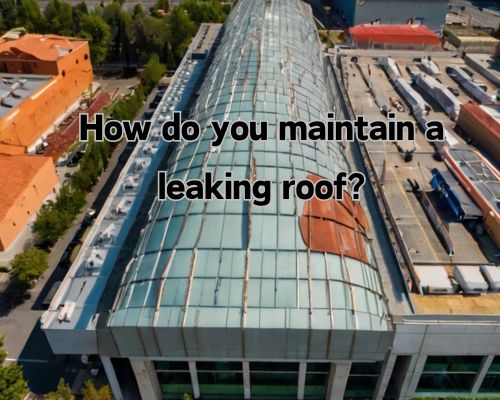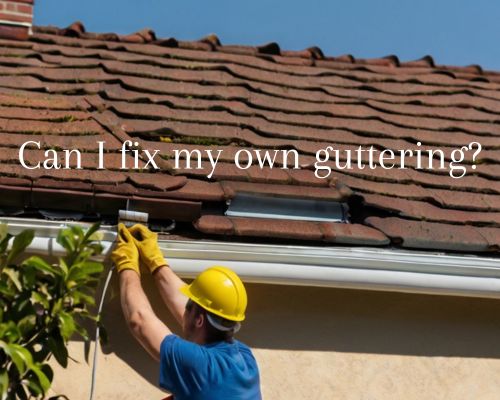Does NJ Require a Permit for Roof Repairs and Replacements?

Does NJ Require a Permit for Roof Repairs and Replacements?
When it comes to roofing in New Jersey, homeowners often question whether they need a permit for installation or repairs. The answer largely depends on the scope of the work. Let us have an understanding on this with Charles Jimerson from CJ Commercial Roofing NJ.

For standard roof replacements on one or two-family homes, you do not need a permit. This change was implemented in March 2018, reclassifying roof replacements as minor work or ordinary maintenance.
This regulatory shift aims to simplify the process for homeowners and contractors, eliminating the need for lengthy inspections and paperwork. While this makes roofing jobs more straightforward, it’s crucial to understand what qualifies as “minor work.”
If your project involves not just replacing shingles but also roof rafters or structural elements, a permit may indeed be required.
Knowing these details can save you from unnecessary headaches. Ignoring permit requirements for more extensive work may lead to severe penalties, including fines and potential lawsuits.
Understanding New Jersey Roofing Permit Regulations
In New Jersey, roof permits are subject to specific regulations that define when a permit is needed and which types of roofing work are covered. These rules are designed to ensure safety and compliance with state building codes.
Permit Requirements for Roof Work
Since 2018, New Jersey regulations have redefined the requirements for roof permits, particularly for single and two-family homes. Roof replacements are classified as minor work or ordinary maintenance. As such, they do not require a construction permit.
However, major roof modifications or installing new roofing systems on larger properties may still require permits. Failure to comply with permit requirements can lead to severe penalties, including fines ranging from $500 to $2,000 per day.
Types of Roofing Projects Covered Under Permit Regulations
There are specific roofing projects that fall under New Jersey’s permit regulations. Routine maintenance and small repairs do not generally require permits. New roofing installations, substantial structural changes, and certain types of roof extensions, however, do require permits.
For example, adding dormers or changing the roof pitch would need a permit. Always check with local municipalities to verify if your project needs a permit before starting work.
The Role of the Department of Community Affairs
The Department of Community Affairs (DCA) plays a crucial role in enforcing roofing permit regulations in New Jersey. The DCA reclassified roof replacements as minor work in March 2018, thus exempting them from the need for a permit for single and two-family homes.
The DCA also ensures that building codes are adhered to, overseeing inspections when necessary. Contractors must still comply with safety and quality standards set by the DCA, even when permits are not required. Regular updates from the DCA help keep the regulations current and effective.
Practical Considerations for Roofing Projects
When undertaking a roofing project in New Jersey, it is essential to consider choosing a reputable contractor like Charles Jimerson from CJ Commercial Roofing NJ, managing costs and insurance, and ensuring compliance with local codes to guarantee quality work and avoid potential penalties.
Choosing a Roofing Contractor
Selecting the right roofing contractor is crucial. Ensure the contractor is certified, insured, and licensed to operate in New Jersey.
Check their reputation through reviews on platforms like Angie’s List or the Better Business Bureau.
Request references from past clients and verify their experience with similar projects.
Seek a written contract detailing the scope of work, materials to be used, timeline, and payment schedule. A reliable contractor should also offer a free estimate.
Assessing Costs and Insurance
Understanding the costs involved in a roofing project is vital for budgeting. Obtain multiple quotes from different contractors to compare prices.
Factor in the cost of materials like shingles and any additional features such as vents or skylights.
Investigate financing options if needed. Also, review your homeowner’s insurance policy to see what is covered and notify your insurance company about the project.
Ensure that the contractor has valid insurance to cover any potential damages or accidents during the installation process.
Ensuring Compliance and Quality in Roof Installations
Compliance with New Jersey’s roofing codes is mandatory.
Most roofing projects will at least require you to consult with local building authorities.
You should do this to see if a permit is necessary, especially for major changes such as adding a skylight or altering roof design.
Ensure that the roof insulation meets the required R-value for your area.
For example, in climate zone 4, the minimum R-value is 38 for residential buildings.
Regularly monitor the progress of the work.
Verify that the materials and methods used comply with both contracts and local codes.
Before final payment, conduct a thorough inspection of the completed work to ensure quality and compliance.





















